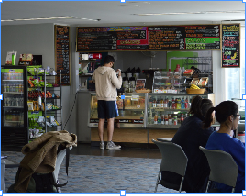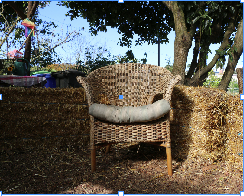Mia Orantia
Staff Writer
As an urban university, USF is quite small compared to other colleges, but nestled within our 58-acre campus are some hidden spots you usually wouldn’t find on your way to class…unless you get incredibly lost on your first day and happen to stumble upon these:
Kalmanovitz Hall Rooftop Sculpture Terrace
From the Renaissance-era church portal from Spain in the amphitheater, to the art that greets you as your enter the building, it comes with no surprise that Kalmanovitz Hall also has a rooftop with an artistic element. Atop K-Hall is a sculpture terrace with a bird’s eye view of campus. The terrace rotates exhibitions, and currently on display is “¡Escultura!” which features work from The Mexican Museum’s Permanent Collection.
Koret Deli
It may seem confusing for a gym to have a deli, but it is true—Koret Health and Recreation Center has one that serves filling sandwiches and quick breakfast options. Located in the lounge on the third floor, Koret Deli is a convenient place to grab a bite after a workout. Or maybe you can skip the workout and go straight to the grubbing. What is the freshmen fifteen anyways?
Del Santo Reading Room (a.k.a Harry Potter Reading Room)
An alternative studying spot to Gleeson Library is the Del Santo Reading Room in the East wing of Lone Mountain’s second floor. The dimly lit space takes you back in time with the old-school wooden furniture, aged bookcases, and a lingering smell of old books, making you feel like you’re in Hogwarts. Many say they’ve heard the Basilisk or have even seen the ghost of a nun in there. I guess that just comes with attending a university more than a century old.
USF Community Garden
Next to the education building is USF’s community garden, where students cultivate year-round seasonal vegetables, fruit, and herbs. It’s a great spot to temporarily remove you from the city environment and for you to enjoy the fruits of our community’s labor. Food harvested from the community garden can be enjoyed at the campus farm stand and the free monthly community dinners at St. Cyprian’s Episcopal Church.
Lawn by Rossi Wing, next to Lone Mountain
For a panoramic view of USF’s surroundings and the landscapes of San Francisco, the lawn by Rossi Wing is the prime location. When Karl the Fog (@KarlTheFog) isn’t around, you can sit on one of the benches and see the downtown skyline cloaked by the ocean. The most direct sunlight also hits this location, perfect for basking or maybe, just maybe, getting a bit of a tan laying on the green grassy lawn.








